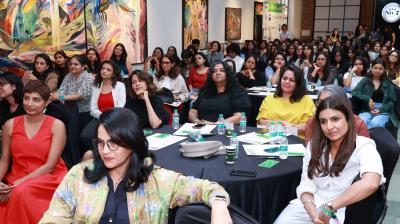Despite its proven impact, many brands struggle to embed design effectively into their strategies, particularly in regions like India, where design maturity lags behind global benchmarks.
Visual design isn’t just about aesthetics. It’s a powerful lever for consumer engagement and differentiation. Research underscores this: visual content is 40 times more shareable on social media, according to PwC, and brands with robust design outperform their peers by 211% over ten years.
With these insights at the fore, in our November issue, we explored how marketers can integrate design more effectively into their marketing plans.
During our conversation, Gianmauro Vella, vice president and head of design APAC and AMESA, PepsiCo, highlighted regional disparities in design integration.
“Design is a relatively new capability, established about 12 years ago. While markets like the U.S. and China have fully embraced design, in regions like India, it remains a work in progress,” he said.
For global brands like PepsiCo, the challenge lies in harmonising global design frameworks with local cultural narratives. Vella cited Pepsi’s recent rebranding as a testament to design’s ability to unify brand identity across markets while resonating with diverse audiences.
Ritu Bhandari, senior director, Capgemini, emphasised design’s role in brand coherence.
“Design is the foundation of our identity. Our ‘meaningful connections framework’ ensures consistency across industries. Coherence is key, and design drives this effort with a global team of 80-100 designers,” she noted.
Whereas, Aparajita Ninan, CMO and founder of Nao Spirits, explained how design amplifies storytelling for brands like Greater Than gin.
“Design addresses a critical issue in the spirits industry—the mystique surrounding alcohol. By embracing transparency and relatability, our design ensures accessibility, even within advertising constraints,” she shared.
For Ninan, design is a linchpin in building consumer trust, especially when traditional advertising options are limited.
Furthermore, Design isn’t just about visuals—it’s a means of sparking creativity within organisations. Hajime Yakushiji, creative director, Dentsu Inc., stressed the need for designers to think beyond aesthetics.
“Designers must focus on how their work is applied across contexts. It’s not just about creating but ensuring the broader usability of their designs,” he said.
Yakushiji’s insights highlighted the deeper philosophical aspects of design, which can unlock meaning and solve complex business problems.
Consistency and localisation remain core challenges for global brands. Bhandari shared her approach:
“We aim to maintain a cohesive design framework adaptable to diverse markets. Generative AI is a game-changer, but we must be cautious about risks to protect our brand identity.”
Vella pointed to internal challenges within the design community, urging designers to bridge gaps with business teams.
“As a design function, we must connect more deeply with business objectives. Understanding business needs and impacts is essential for advancing design as a strategic discipline,” he added.
The journey toward integrating design as a core marketing strategy is ongoing. By prioritising education, fostering creativity, and aligning design with business goals, brands can fully harness its transformative power. As Vella stated, “Mastering design takes discipline and resilience, but the rewards are worth the effort.”
This feature first appeared in the November issue of Manifest. To gain deeper insights on integrating design into your marketing plans, get your copy here. For subscription options click here.










